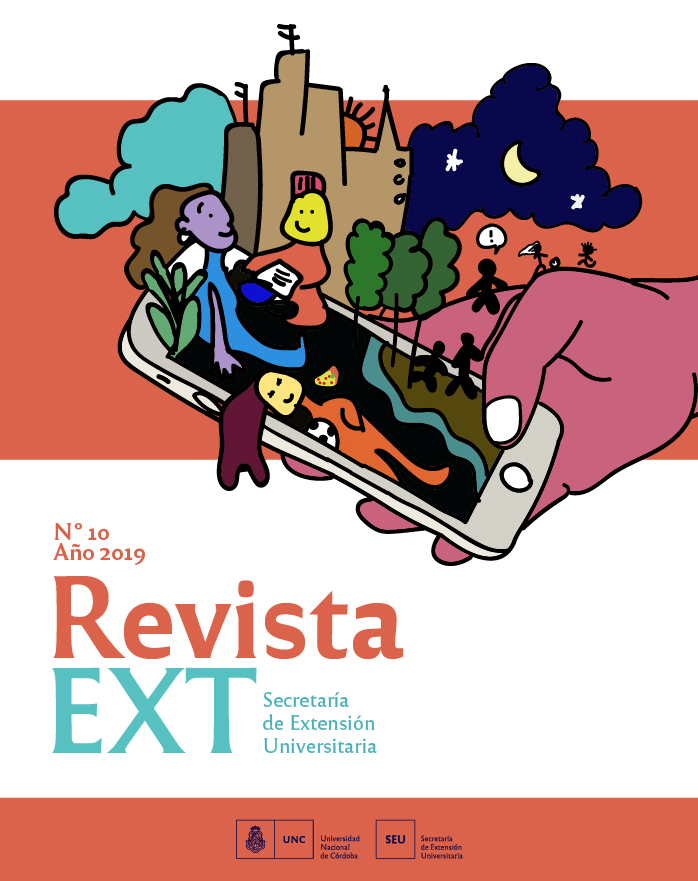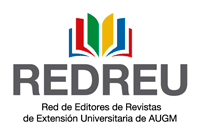Aromatic and medicinal plants in Paravachasca: promoting sustainable use
Keywords:
Natural resources; outreach; essential oils; regional developmentAbstract
In Córdoba province, the use and commercialization of native aromatic and medicinal plants (AMP) are widespread practices adopted by the population. This context defines the need for the development of adequate technologies and its transfer to the environment in order to revalue and conserve the resource; the proposed objectives were to promote the use, production and sustainable use of native AMP in Valle de Paravachasca and to train social actors in management practices. In order to address sustainable practices in the use of AMP and their cultivation, the training and learning of students, teachers, producers and policy makers was carried out through journeys, practical workshops in fields and exchange of knowledge. The development of new knowledge was achieved through active participation in the different stages carried out. It is worth highlighting that students and teachers showed great interest in the activities and spaces for intervention on the subject. The participation of family groups in relation to new concerns and the return of practices and knowledge was visualized, allowing progress towards new objectives in pursuit of regional development. The interrelation and participation made it possible to detect new problems for future challenges in university research and outreach.
Downloads
References
Argañaraz, J.P., Radeloff, V.C., Bar-Massada, A., Gavier-Pizarro, G.I., Scavuzzo, C.M.and Bellis, L.M. (2017). Assessing wildfire exposure in the wildland-urban interface area of the mountains of central Argentina. Journal of environmental management, 196, 499-510
Brunetti P.C. (2017). Estudios en Lippia integrifolia “Incayuyo” orientados a su domesticación y mejoramiento genético. Tesis Doctoral. Facultad de Ciencias Exactas, Físicas y Naturales, Universidad Nacional de Córdoba, Córdoba, Argentina, 11-19 pp.
Bustos J.A. (2009). Caracterización poblacional y de hábitat de la peperina (Minthostachys mollis (Kunth) Griseb.) en el noroeste de Córdoba. Tesis de Maestría. Facultad de Ciencias Exactas, Físicas y Naturales, Universidad Nacional de Córdoba, Córdoba, Argentina, 60 pp.
Gavier G.I., yBucher E.H. (2004). Deforestación de las Sierras Chicas de Córdoba (Argentina) en el período 1970-1997. Academia Nacional de Ciencias, Córdoba Argentina. Miscelánea N°101.
Iannicelli, J., Guariniello, J., Pitta Álvarez, S. y Escandón, A. (2018). Traditional uses, conservation status and biotechnological advances for a group of aromatic / medicinal native plants from America. Biol.Latinoam. Caribe Plant.Med.Aromat, 17 (5): 453 – 491.
Martínez G., Planchuelo A., Fuentes E. y Ojeda M.S. (2006). A numeric index to establish conservation priorities for medicinal plants in the Paravachasca Valley. Córdoba. Argentina. Biodiversity and Conservation, 15: 2457-2475.
Martínez, G. (2015). Las plantas en la medicina tradicional de las Sierras de Córdoba: un recorrido por la cultura campesina de Paravachasca y Calamuchita. 2° Ed. De todos los mares, Córdoba. Argentina, 212 pp.
Ojeda M.S. (2008). Transferencia y difusión del cultivo de plantas aromáticas a pequeños productores y grupos vulnerables usando como modelo la peperina. En: Aprendizaje-Servicio en la Educación Superior: una mirada analítica desde los protagonistas. Eudeba-Bs As (Argentina), 81-88 pp.
Ojeda M.S. (2011). La Peperina: Caracterización de poblaciones y avances en la domesticación. Ed. Académica Española (EAE), 152 pp.
Ojeda M.S., Ordoñez A. y Chaves A.G. (2006). La peperina, hacia su cultivo sustentable. Ed. Sigma. Córdoba, Argentina, 62 pp.
Ojeda, M.S., Karlin, U.O.T., Martínez, G.J., Massuh, Y., Ocaño, S.F., Torres, L.E., Chaves, A.G., Arizio, O. y Curioni, A. (2015). Plantas aromáticas y medicinales. Modelos para su domesticación, Producción y Usos Sustentables. Ed. Universidad Nacional de Córdoba, 183 pp.
Paunero, I. (2017). Informe técnico INTA: Situación actual del cultivo de plantas aromáticas y medicinales en Argentina. (URL http: www.inta.gob.ar/sanpedro).
Paván, M.F., Furlan, V., Caminos, S. y Ojeda, M.S. (2017). Las personas y las plantas medicinales en el noroeste de Córdoba, Argentina. Reconocimiento y valoración de los recursos naturales locales. Bol. Latinoam. Caribe Plant. Med. Aromat, 16 (1): 78 – 87.
Downloads
Published
Issue
Section
License
Aquellos autores/as que tengan publicaciones con esta revista, aceptan los términos siguientes:
- Los autores/as conservarán sus derechos de autor y garantizarán a la revista el derecho de primera publicación de su obra, el cuál estará simultáneamente sujeto a la Licencia de reconocimiento de Creative Commons que permite a terceros compartir la obra siempre que se indique su autor y su primera publicación esta revista.
- Los autores/as podrán adoptar otros acuerdos de licencia no exclusiva de distribución de la versión de la obra publicada (p. ej.: depositarla en un archivo telemático institucional o publicarla en un volumen monográfico) siempre que se indique la publicación inicial en esta revista.
- Se permite y recomienda a los autores/as difundir su obra a través de Internet (p. ej.: en archivos telemáticos institucionales o en su página web) después del proceso de publicación, lo cual puede producir intercambios interesantes y aumentar las citas de la obra publicada. (Véase El efecto del acceso abierto).





